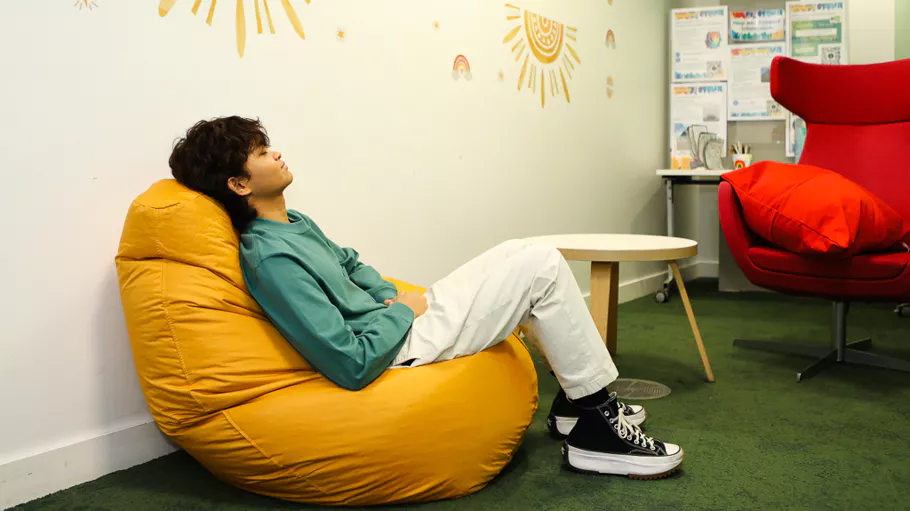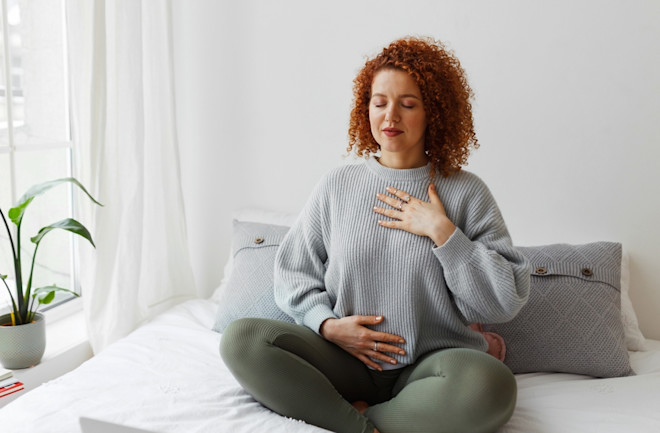Introduction
Meditation and Stress Reduction Techniques to Naturally Reduce Stress and Anxiety reduction has become increasingly significant in today’s fast-paced world, where people face constant demands from work and life. With rising anxiety levels, many individuals are now turning to meditation as a beneficial tool for managing stress and enhancing emotional well-being. Reports indicate that meditation is gaining popularity among those seeking effective strategies to cope with life’s pressures, making it an essential practice for mental health 1.
Meditation is often defined as a technique that encourages mental clarity and emotional balance. At its core, it involves training the mind to observe thoughts and emotions without judgment, which helps in reducing stress. The objective of this article is to explore various meditation techniques that can aid in naturally reducing stress and anxiety, providing practical methods to enhance personal well-being.
Understanding Meditation and Stress Reduction
Meditation has emerged as a vital practice in today’s fast-paced world, offering a pathway to calmer minds and healthier bodies. By incorporating meditation into daily routines, individuals can manage stress more effectively and foster overall well-being.

Overview of Meditation
Meditation is the practice of focusing the mind to achieve a state of mental clarity and emotional calm. It is highly relevant in modern stress management as it offers tools to cope with common stressors in life. Engaging in meditation regularly helps interrupt the stress cycle, promoting a sense of tranquility and groundedness. With consistent practice, individuals can cultivate a more resilient mindset that enables them to respond to challenges with calmness and confidence.
Impact on Mental and Physical Health
The practice of meditation can significantly enhance self-awareness and emotional regulation. Through meditation, individuals learn to observe their thoughts and feelings without judgment, leading to improved self-understanding and emotional control. This heightened self-awareness allows for better management of stress and anxiety, fostering a healthier emotional landscape and Meditation and Stress Reduction.
Moreover, the benefits of meditation extend beyond mental health. Research indicates that regular meditation can lead to substantial improvements in both physical and mental health. For instance, studies have shown that meditation can reduce symptoms of anxiety and depression, lower blood pressure, and enhance immune function. This holistic approach to health not only benefits individuals mentally but also contributes to overall physical wellness, creating a balanced and fulfilling life.

Key Meditation Techniques
Meditation is a powerful tool for enhancing well-being, and several techniques can help practitioners find clarity and calm. Here are some popular methods to consider for Meditation and Stress Reduction:
Mindfulness Meditation
Mindfulness meditation emphasizes present-moment awareness, allowing individuals to focus on their thoughts, feelings, and bodily sensations without judgment. To practice mindfulness meditation:
- Find a quiet space to sit comfortably.
- Close your eyes and bring your attention to your breath.
- Notice how your body feels and observe any thoughts that come to mind. Acknowledge them and gently return your attention to your breath for Meditation and Stress Reduction.
This practice encourages a deeper connection to the present, fostering a sense of peace and acceptance.
Deep Breathing Exercises for Meditation and Stress Reduction
Deep breathing is essential for calming the body and activating the parasympathetic nervous system, which helps to reduce stress. Techniques such as 4-7-8 Breathing and Box Breathing are effective methods:
- 4-7-8 Breathing: Inhale through the nose for a count of 4, hold for 7 seconds, and then exhale through the mouth for 8 seconds. Repeat this cycle several times.
- Box Breathing: Inhale for 4 seconds, hold for 4 seconds, exhale for 4 seconds, and then hold again for 4 seconds. This technique can help ground you in moments of anxiety.
These exercises promote relaxation and can be integrated into daily routines.

Walking Meditation
Walking meditation blends mindfulness with movement, focusing on the experience of walking. To practice walking meditation: ( Meditation and Stress Reduction )
- Choose a quiet path where you can walk undisturbed.
- Begin to walk slowly, paying attention to each step and the sensations in your feet and legs.
- Synchronize your breath with your steps. For example, inhale for four steps and exhale for four steps.
This practice enhances mindfulness and brings awareness to the act of walking, turning it into a form of meditation.
Body Scan Meditation
Body scan meditation increases body awareness by encouraging individuals to notice bodily sensations. To perform a body scan meditation:
- Lie down in a comfortable position and close your eyes.
- Starting from your toes, mentally scan your body for sensations, tension, or relaxation.
- Gradually work your way up through your body, focusing on each area without judgment.
This technique helps cultivate a deeper awareness of the body and encourages relaxation throughout.
These meditation techniques provide various ways to foster mindfulness, ease stress, and enhance overall well-being. By incorporating them into daily life, individuals can experience a more balanced and mindful existence.
Evidence-Based Benefits of Meditation
Meditation is not just a relaxing practice; it comes with numerous scientifically-backed benefits that can significantly enhance mental health and well-being.

Scientific Findings
Research indicates that meditation can lead to a measurable reduction in cortisol levels, the hormone primarily associated with stress. A lower cortisol level suggests that individuals who meditate consistently may experience less stress and anxiety overall. Moreover, several studies report that individuals who engage in meditation experience enhanced mood and overall well-being. This improvement is often attributed to meditation’s ability to promote positive emotional states and reduce negative thought patterns, creating a more balanced emotional landscape in everyday life to Meditation and Stress Reduction.
Improvement in Sleep and Resilience
Meditation also plays a critical role in improving sleep quality. Regular practitioners often report falling asleep faster and enjoying a deeper sleep, which is essential for overall health and cognitive function. Additionally, meditation fosters increased psychological resilience, helping individuals to cope better with stress and adversity. This heightened resilience allows for more effective handling of challenging situations, enhancing one’s ability to recover from setbacks. As a result, meditation serves as a valuable tool for both improving sleep quality and developing robust coping mechanisms in face of life’s stressors for Meditation and Stress Reduction.
Beginner-Friendly Tips for Practicing Meditation
Starting a meditation practice can feel daunting, but with a few simple tips, anyone can cultivate a fulfilling routine. Here are some beginner-friendly suggestions to ease you into meditation.
Ideal Duration
One of the best ways to start meditating is by establishing a manageable duration for your sessions. It’s recommended to begin with just 5-10 minutes of daily practice and slowly increase this time as you become more comfortable. Keeping the sessions short at the beginning helps maintain your focus and motivation. Regular practice is vital for effectiveness, as consistency leads to greater benefits over time.
Creating the Right Environment
Your meditation space plays a significant role in your practice. Choose a quiet and comfortable location where you can sit or lie down without interruptions. It helps to eliminate distractions—turn off notifications on your devices and inform those around you that you need some time to yourself. This deliberate setting creates a welcoming atmosphere conducive to Meditation and Stress Reduction.
Posture and Comfort
Finding a comfortable posture is essential for a successful meditation session. Whether you prefer sitting on a cushion, in a chair, or lying down, make sure that your position supports relaxation without causing discomfort. Being physically comfortable allows your mind to focus more on the practice instead of your body’s needs. Remember, discomfort can detract from the quality of your meditation experience.
Embrace these tips as you embark on your meditation journey; they can help create a sustainable and enjoyable practice.

FAQ Section
How long does meditation take to reduce stress and anxiety?
Many individuals begin noticing the benefits of meditation within a few weeks of consistent practice. Initial effects can include a greater sense of calm and improved focus. Additionally, immediate benefits may arise after individual sessions, such as feelings of relaxation and reduced tension during or shortly after meditation practice 1.
Which meditation techniques are most effective for beginners?
For those just starting out, mindfulness meditation and breathing exercises are highly effective techniques. Mindfulness meditation encourages a present-moment awareness while breathing exercises can enhance concentration and reduce anxiety. Importantly, these techniques can be practiced almost anywhere, making them convenient options for beginners 2.
Can meditation help immediately reduce anxiety?
The immediate effects of meditation can vary from person to person. Some individuals report experiencing a sense of calm both during and after their meditation sessions. Testimonies often highlight feelings of lightness and mental clarity, indicating that even short practices can foster significant relief from anxiety 3.
Are there any side effects of meditation?
Generally, meditation practices are considered safe for most individuals. However, it is advisable to proceed at one’s own pace. While some may experience mild discomfort while adjusting to meditation, these effects are usually temporary. For those beginning their meditation journey, it’s essential to listen to one’s body and mind, ensuring a comfortable practice 4.
